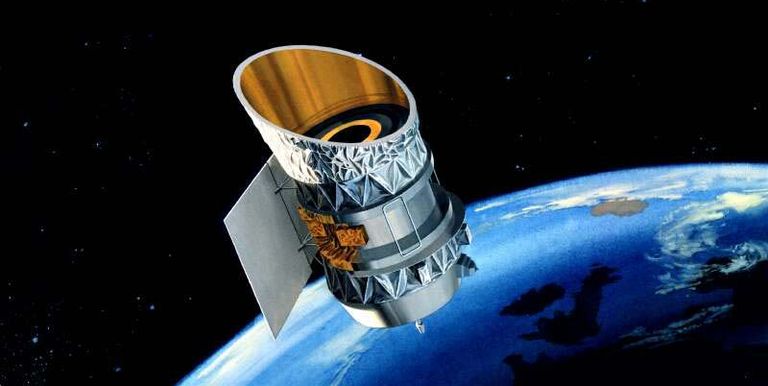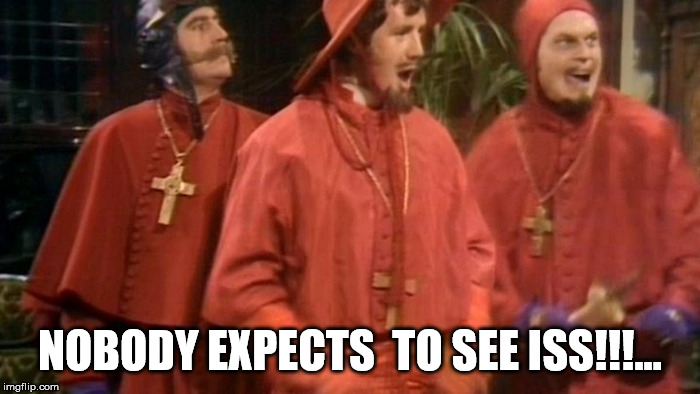
Posted on 01/28/2020 10:20:22 AM PST by Red Badger
What happens if the retired space telescope and former spy satellite crash into each other?
______________________________________________________________
Leo Labs, a venture-based company that monitors satellites in Low Earth Orbit, tweeted yesterday that it was tracking two satellites that will come within 15 to 30 meters of each other January 29, just before 6:40 p.m. EST. The two satellites are IRAS, a decommissioned NASA space telescope, and GGSE-4, a US Naval Research Lab intelligence satellite. They're set to sweep past each other in the skies above Pittsburgh at an altitude of about 559 miles above Earth's surface.
_____________________________________________________________________
LeoLabs, a company that monitors the trajectories of spacecraft in Low Earth Orbit, tweeted Monday afternoon that it was monitoring the close approach of two satellites that are likely to come within meters of each other on Wednesday, January 29. Were they to crash, the collision could send out a sprawling debris field, which could potentially impact other satellites in orbit.
The two satellites, NASA’s IRAS space telescope and the experimental U.S. Naval Research Lab satellite GGSE-4, will swing past each other at 6:39 p.m. EST at an altitude of about 559 miles in the skies above Pittsburgh, Pennsylvania. They’ll be hurtling along their orbit at a relative velocity of about 32,880 miles per hour and could swing within 50 feet of each other.
LeoLabs noted that, at the time of the tweet, the odds of a collision were about 1 in 100 and said the relatively large size of the two spacecraft increased the risk of a collision. “Events like this highlight the need for responsible, timely deorbiting of satellites and space sustainability moving forward,” the company tweeted.
NASA, the Netherlands Agency for Aerosace Programmes, and the U.K.'s Science and Engineering Research Council launched the Infrared Astronomical Satellite (IRAS) from Vandenberg Air Force Base in California on January 25, 1983. IRAS carried three scientific instruments: a survey array, a low resolution spectrometer and a chopped photometric channel.
For 10 months, the space telescope monitored the skies in infrared wavelengths. It discovered six new comets, charted our galaxy’s guts, and uncovered evidence of solid material—an indicator of planetary formation—around the stars Vega and Formalhaut. The 2103-pound telescope was put to pasture on November 21, 1983. image A model with the same design as U.S. Naval Research Lab satellite Poppy 5B. NRO
Meanwhile, the U.S. Naval Reconnaissance Office, the National Security Agency, and the Naval Research Lab launched the other spacecraft, GGSE-4 or POPPY 5b, from Vandenberg in 1967—one of a seven-satellite intelligence mission. Some information about the POPPY program was declassified in 2005. The 187-pound satellite has 59-foot-long gravity gradient booms that reach out into space—an obvious concern given the close distance in which the two satellites are projected to pass. It was decommissioned in 1972.
Scientists and space industry veterans founded LeoLabs in 2016 to better track and monitor the myriad satellites, spacecraft, and debris hurtling through Low Earth Orbit, according to its website. Based out of Menlo Park, California, the company has a worldwide network of phased-array radars that track objects in LEO in high definition.
As we’ve increasingly launched more and more spacecraft into Earth’s orbit, astronomers, engineers, and space industry experts have grown increasingly concerned about the Kessler Effect. Named for NASA space debris expert Don Kessler, the theory suggests a series of collisions between spacecraft in Earth’s orbit could spur a devastating series of chain reactions.
If there were enough impacts, the amount of space junk created would reach a critical mass, blanketing our planet in fog of debris and making it nearly impossible to safely launch spacecraft from Earth.
Former astronaut Ed Lu, who is LeoLabs’ vice president of strategic projects, put a call out to Pittsburgh-area amateur astronomers to train their telescopes on the sky tomorrow night. Needless to say, we’ll all be holding our breath, hoping these two satellites can slide past each other without incident.

A model with the same design as U.S. Naval Research Lab satellite Poppy 5B.
__________________________________________________________

IRAS (13777), the decommissioned space telescope launched in 1983, and GGSE-4 (2828), an experimental US payload launched in 1967.
(IRAS image credit: NASA)
thanks for that information.
The Navy satellite has several 20-meter booms sticking out of it. That’s enough for at least a glancing strike.
They’re going in opposite directions. Per the article, the relative velocity of the two is 32,000mph. Most objects in orbit travel at about their max launch speed which is closer to 15,000mph. To get that relative velocity, they have to be heading almost straight for each other.
This would be so easy to fix. Send out small pods about the size of a coffee can that contain a thin nylon net and a mini thruster. The net captures the target and the thruster slows down the object, subjecting it to gravity. Cost would be minimal.
You know these pieces of junk are traveling at thousands of miles per hour?.................
“I’m surprised Space is not the new frontier for environmental activism.”
The environmentalists can’t even keep a power company going like the one, Solyndra, Obama threw away our money on. Do something as intricate as working in space? Get out the body bags.
rwood
I can’t believe they don’t drop these in the ocean when no longer needed

webheart wrote:
Even as close as 15 meters the odds of them actually colliding are astronomically against. 15 meters is bigger than either satellite and we are talking about 3 dimensions rather than 2.
Except...
“The 187-pound satellite has 59-foot-long gravity gradient booms that reach out into space—an obvious concern”
Thats 17.9 meters....
“...Two Satellites Could Collide...”
So, what happens if they do collide?
I doubt it would be visible through the atmosphere.
That’s not good. To much junk out there now.
Yep. Just have to match the speed until capture.
Ster-ril-liiiiiiiiiiiiiiizzzzzzzzzzzzzzeee...........
Ouch. The two decommissioned sats *may* collide, which would, potentially, spread sharp debris in various directions. That would pose a threat to other satellites.

At the very least, it will be overcast, here on the Oregon coast. Anytime Imhear about some near-Earth event, I figure it’ll be invisible to me. A while back, , I stepped out the back door and happened to see the ISS. I was not expecting that.

You get a spy satellite that can read President Trump’s lips from the Oval Office window when he says “No quid pro quo”?
Disclaimer: Opinions posted on Free Republic are those of the individual posters and do not necessarily represent the opinion of Free Republic or its management. All materials posted herein are protected by copyright law and the exemption for fair use of copyrighted works.